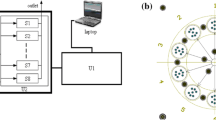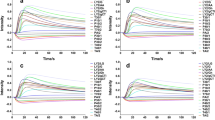Abstract
Rapid test methods with portable devices along with standard chemical tests are necessary to determine raw syrup quality in the sugarcane agro-industries. On this account, a special e-nose device was developed to test the sugarcane syrup and its association with the odor emitted from it to determine the amount of sucrose (purity) in the sugarcane syrup. Samples were obtained from the farms of Hakim-Farabi agro-industry, including four varieties (CP57, CP69, IRC99-02, and CP48). Experiments included chemical tests to determine the percentage of purity (PTY) and refined sugar (RS) plus an electronic nose test. Partial least squares (PLS), principle component regression (PCR), multiple linear regression (MLR), and artificial neural network (ANN) methods were used to evaluate the correlation between the gained signals from the sensor array and chemical analysis results of the samples. In the case of PTY, among 8 sensors, MQ3, MQ5, and MQ9 had the highest response compared to the others, while regarding RS, all the sensors except for MQ8 indicated a great contribution. Also, all models for PTY and RS showed a good prediction performance. The results revealed that ANN model, with topology 8–1-2, outperformed others for prediction of the quality indices of sugarcane, with high correlation coefficients (R2 = 0.96 for RS; 0.99 for PTY), and relatively low RMSE values of 0.33 for RS; 0.4 for RTY. Finally, findings indicated that e-nose technique has the potential to become an authentic tool to assess chemical features of sugarcane syrup from e-nose system signals.



Similar content being viewed by others
References
Aguilera T, Lozano J, Paredes JA, Alvarez FJ, Suarez JI (2012) Electronic nose based on independent component analysis combined with partial least squares and artificial neural networks for wine prediction. Sensors 12(6):8055–8072
Brjesson TA, Eklov T, Jonsson A, Sundgren H, Schnurer J (1996) An electronic nose for odor classification of grains. Cereal Chem 73(4):457–461
Dymerski T, Gębicki J, Wardencki W, Namieśnik J (2014) Application of an electronic nose instrument to fast classification of polish honey types. Sensors 14(6):10709–10724
FAO, (2017). FAOSTAT. https://www.fao.org/faostat/en/#data/QC
Ghasemi-Varnamkhasti M, Mohtasebi SS, Siadat M, Balasubramanian S (2009) Meat quality assessment by electronic nose (machine olfaction technology). Sensors 9(8):6058–6083
Gutierrez-Osuna R, Nagle HT, Kermani B, Schiffman SS (2003) Signal conditioning and preprocessing. Electronic Nose Technology, Wiley-VCH, Handbook of Machine Olfaction, pp 105–132
HaiHai Z, Wang J (2006) Detection of adulteration in camellia seed oil and sesame oil using an electronic nose. Eur J Lipid Sci Technol 108(2):116–124
Heidarbeigi K, Mohtasebi SS, Foroughirad A, Ghasemi-Varnamkhasti M, Rafiee S, Rezaei K (2015) Detection of adulteration in saffron samples using electronic nose. Int J Food Prop 18(7):1391–1401
ISIRI, (2014). The Braunschweig Method for The Polarization of White Sugar by Polarimetry. National Iranian Standard. INSO. 4522, ICS: 67.180.10.
ISIRI (2016). Determination of the polarization of raw sugar by polarimetry. National Iranian Standard. INSO. 6897, ICS: 67.180.10.
James G (2004) Sugarcane (2th ed.). Blackwell Science. 224 p.
Loutfi A, Coradeschi S, Ganesh KM, Shankar P, Rayappan JBB (2015) Electronic noses for food quality: a review. J Food Eng 144:103–111. https://doi.org/10.1016/j.jfoodeng.2014.07.019
Macías M, Agudo JE, Manso AG, Orellana CJG, Velasco HMG, Gallardo-Caballero R (2013) A Compact and low-cost electronic nose for aroma detection. Sensors (Basel, Switzerland) 13:5528–5541. https://doi.org/10.3390/s130505528
Majchrzak T, Wojnowski W, Dymerski T, Gębicki J, Namieśnik J (2018) Electronic noses in classification and quality control of edible oils: a review. Food Chem 246:192–201
Namjoo M, Razavi J (2014) Development and evaluation of a new double-row sugarcane billet planter with overlap planting pattern. Agric Mech Asia, Africa and Latin (AMA). 45(2):57–64
Nawi NM, Jensen T, Chen G (2014) Prediction of sugarcane quality from juice samples using portable spectroscopy. J Mech Eng Sci (JMES) 7:1219–1226
Payne JH (1968) Sugar cane factory analytical control: the official methods of the Hawaiian sugar technologists. Elsevier, Amsterdam
Peris M, Escuder-Gilabert L (2009) A 21st century technique for food control: electronic noses. Anal Chim Acta 638(1):1–15
Rutolo MF, Iliescu D, Clarkson JP, Covington JA (2016) Early identification of potato storage disease using an array of metal-oxide based gas sensors. Postharvest Biol Technol 116:50–58
Sanaeifar A, Mohtasebi SS, Ghasemi-Varnamkhasti M, Ahmadi H (2016) Application of MOS based electronic nose for the prediction of banana quality properties. Measurement 82:105–114
Sanaeifar A, ZakiDizaji H, Jafari A, Guardia, M.d.l., (2017) Early detection of contamination and defect in foodstuffs by electronic nose: A review. TrAC, Trends Anal Chem 97:257–271
Solomon S (2009) Post-harvest deterioration of sugarcane. Sugar Tech 11(2):109–123
Taira E, Ueno M, Kawamitsu Y (2010) Automated Quality Evaluation System for Net and Gross Sugarcane Samples using Near Infrared Spectroscopy. J Near Infrared Spectrosc 18:209–215
Tohidi M, Ghasemi-Varnamkhasti M, Ghafarinia V, Bonyadian M, Mohtasebi SS (2018) Development of a metal oxide semiconductor-based artificial nose as a fast, reliable and non-expensive analytical technique for aroma profiling of milk adulteration. Int Dairy J 77:38–46
Wall ME, Rechtsteiner A, Rocha LM (2003) Singular value decomposition and principal component analysis. Springer, A practical approach to microarray data analysis, pp 91–109
Wojnowski W, Majchrzak T, Dymerski T, Gębicki J, Namieśnik J (2017) Portable electronic nose based on electrochemical sensors for food quality assessment. Sensors 17(12):2715
Yang HF, Wang SL, Yu SJ, Zeng XA, Sun DW (2014) Characterization and semi quantitative analysis of volatile compounds in six varieties of sugarcane juice. Int J Food Eng 10(4):821–828
Zhang HM, Wang J (2007) Detection of age and insect damage incurred by wheat, with an electronic nose. J Stored Prod Res 43:489–495
Zhang H, Wang J, Ye S, Chang M (2012) Application of electronic nose and statistical analysis to predict quality indices of peach. Food Bioprocess Technol 5:65–72
Zhang H, Wang J, Ye S (2008) Predictions of acidity, soluble solids and firmness of pear using electronic nose technique. J Food Eng 86:370–378
Acknowledgements
The authors appreciate Dr. Alireza Sanaeifar to develop the e-nose device, and the R&D office of Hakim-Farabi agro-industry, for samples and academic supports. We are grateful to the research council of the Shahid Chamran University of Ahvaz (SCUA) financial support (the grant number SCU.AA98.585).
Author information
Authors and Affiliations
Corresponding author
Additional information
Publisher's Note
Springer Nature remains neutral with regard to jurisdictional claims in published maps and institutional affiliations.
Hassan Zaki Dizaji will handle correspondence at all stages of refereeing and publication, also post-publication.
Practical Applications: To start harvesting whose time depends on various factors, such as sugarcane variety, date of planting, and last year harvest conditions. Regarding sugarcane variety, the exact time for sugarcane harvest initiation is determined based on the daily monitoring of raw syrup quality by chemical measurements. On the other hand, sugarcane billet or its syrup cannot be stored in the factory and its sugars factors are decomposed quickly by storage. Therefore, rapid test methods with portable devices along with standard chemical tests seem to be necessary to determine RTY and RS in the sugarcane agro-industries. E-nose technique combined with the modeling methods, such as MLR, PCR, PLS, and ANN can be introduced as a rapid testing method to estimate the RTY and RS.
Rights and permissions
About this article
Cite this article
Zaki Dizaji, H., Adibzadeh, A. & Aghili Nategh, N. Application of E-nose technique to predict sugarcane syrup quality based on purity and refined sugar percentage. J Food Sci Technol 58, 4149–4156 (2021). https://doi.org/10.1007/s13197-020-04879-4
Revised:
Accepted:
Published:
Issue Date:
DOI: https://doi.org/10.1007/s13197-020-04879-4




